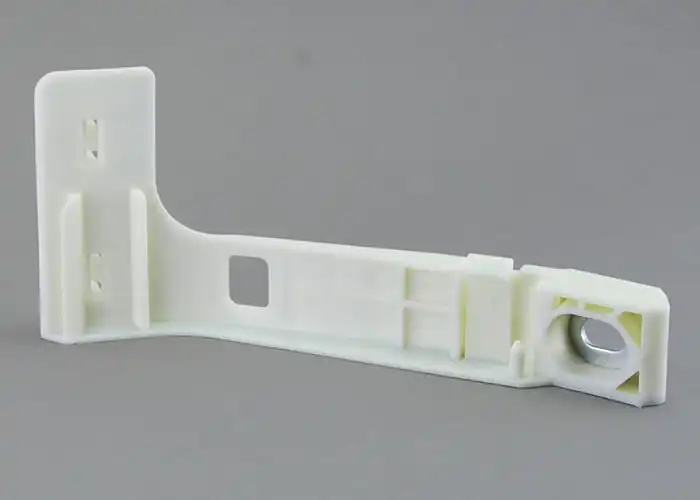How Does BMW Accelerator Attach to Adapter Plate? The accelerator pedal in a BMW, or any vehicle for that matter, is a crucial component of the car’s overall performance. It’s the direct link between the driver’s input and the vehicle’s response, making its installation and functionality of utmost importance. Understanding how the BMW accelerator attaches to the adapter plate is vital for anyone involved in the installation or maintenance of this component.
Overview of the Accelerator System in BMW Vehicles
Before diving into the specifics of how the accelerator attaches to the adapter plate, it’s important to understand the overall system:
- Accelerator Pedal: This is the pedal you press with your foot to control the engine’s throttle.
- Adapter Plate: A structural component that acts as an intermediary between the pedal assembly and the vehicle’s chassis.
- Electronic Throttle Control (ETC): Modern BMWs use an electronic throttle control system, where the pedal’s position is monitored by sensors and the information is relayed to the engine control unit (ECU) to adjust the throttle.
Key Components of the Accelerator System
To understand the attachment process, it’s necessary to identify the key components involved:
- Pedal Arm: The part of the accelerator pedal that connects to the adapter plate.
- Sensor Assembly: In modern BMWs, the accelerator pedal is often connected to a sensor assembly that communicates with the ECU.
- Adapter Plate: This plate provides the mounting point for the pedal assembly and ensures it is securely attached to the vehicle.
- Mounting Brackets: These brackets are used to secure the adapter plate to the vehicle’s chassis.
- Bolts and Fasteners: High-grade bolts and fasteners are essential for securing the pedal to the adapter plate and the plate to the vehicle.
Step-by-Step Guide for BMW Accelerator Attach to Adapter Plate
1. Preparing for Installation
Gathering Tools and Materials:
- To begin, gather all the necessary tools, including wrenches, screwdrivers, drill, and the appropriate size drill bits if the adapter plate requires drilling. Ensure you have the correct bolts and fasteners, usually provided by the manufacturer or specified in the vehicle’s manual.
Ensuring Safety:
- Before starting, disconnect the battery to prevent any electrical issues, especially since the accelerator pedal is linked to the electronic throttle control system. Place the vehicle in park and ensure it’s on a level surface to prevent any movement during installation.
Reviewing the Installation Manual:
- Carefully review the BMW service manual for the specific model you’re working on. The manual will provide details on the correct placement of the adapter plate, the type of bolts required, and the torque specifications for tightening.
2. Positioning the Adapter Plate
Locating the Mounting Points:
- The first step in the physical installation process is to locate the designated mounting points on the vehicle’s chassis or firewall. These points are specifically designed to accommodate the adapter plate and ensure it is aligned with the vehicle’s controls.
Aligning the Adapter Plate:
- Place the adapter plate against the mounting points and ensure it is perfectly aligned. Misalignment at this stage can cause issues with pedal operation, leading to unsafe driving conditions.
Marking the Drill Points (if necessary):
- If the adapter plate does not have pre-drilled holes, use a marker to indicate where the holes should be drilled. This is a critical step that requires precision, as drilling in the wrong spot can compromise the structural integrity of the plate or the vehicle.
3. Securing the Adapter Plate to the Vehicle
Drilling Holes:
- If the holes are not pre-drilled, use the appropriate drill bit to create holes at the marked points. Be sure to drill perpendicular to the surface to avoid any misalignment.
Inserting Bolts:
- Once the holes are ready, insert the bolts through the adapter plate and into the vehicle’s chassis. Use high-grade, corrosion-resistant bolts to ensure a secure and long-lasting attachment. The bolts should be tightened to the torque specifications provided in the service manual to prevent any loosening during vehicle operation.
Checking the Plate’s Stability:
- After bolting the adapter plate in place, check for any movement. The plate should be completely secure, with no play or wiggle. This stability is crucial for the proper functioning of the accelerator pedal.
4. Attaching the Accelerator Pedal to the Adapter Plate
Mounting the Pedal Assembly:
- With the adapter plate securely in place, the next step is to mount the accelerator pedal assembly. Align the pedal’s mounting points with the holes on the adapter plate. This is where precision is key, as even slight misalignment can cause the pedal to operate improperly.
Securing the Pedal:
- Insert the bolts or fasteners through the pedal assembly and into the adapter plate. As with the adapter plate, these bolts should be tightened to the correct torque specifications to ensure a secure fit. Double-check that the pedal is firmly attached and that there is no play in the assembly.
Connecting the Sensor:
- In modern BMWs, the accelerator pedal is equipped with a position sensor that needs to be connected to the ECU. Carefully connect the sensor’s wiring harness, ensuring that the connections are secure and that the wires are routed away from any moving parts to prevent damage.
5. Finalizing the Installation
Testing the Pedal Operation:
- With everything securely attached, it’s time to test the pedal operation. Press the accelerator pedal and check for smooth, consistent movement. The pedal should return to its original position without sticking or hesitation.
Calibrating the Sensor (if necessary):
- Some BMW models may require sensor calibration after installation. This process ensures that the ECU accurately reads the pedal’s position and translates it into the correct throttle response. Refer to the service manual for specific calibration procedures.
Reconnecting the Battery:
- Once the installation is complete and you’re satisfied with the pedal operation, reconnect the battery. Start the vehicle and test the throttle response to ensure everything is functioning correctly.
6. Troubleshooting Common Issues
Even with careful installation, issues can arise. Here are some common problems and their solutions:
- Pedal Feels Loose: If the pedal feels loose or wobbly, it’s likely that the bolts attaching the pedal to the adapter plate are not tightened sufficiently. Re-check the torque specifications and ensure all bolts are secure.
- Pedal Does Not Return Properly: This could indicate a misalignment between the pedal and the adapter plate or an issue with the return spring. Inspect the assembly and make adjustments as needed.
- Throttle Response Issues: If the vehicle’s throttle response is erratic after installation, it may be due to a sensor connection issue or the need for sensor calibration. Double-check all electrical connections and refer to the service manual for calibration instructions.
- Unusual Noises: Any creaking or clicking noises when pressing the pedal could indicate that the adapter plate or pedal assembly is not securely attached. Inspect the installation and tighten any loose components.
Maintenance Tips for Long-Term Performance
Maintaining the accelerator system is crucial for long-term vehicle performance and safety:
- Regular Inspections: Periodically check the accelerator pedal assembly and adapter plate for signs of wear or loosening. This is especially important after long drives or when driving on rough terrain.
- Cleaning the Sensor Area: Keep the area around the sensor free of dust and debris to ensure accurate readings. If the sensor becomes dirty, clean it gently with a dry cloth or compressed air.
- Lubrication: Although the pedal assembly is designed to operate smoothly without additional lubrication, in some cases, applying a small amount of lubricant to the moving parts can reduce friction and extend the life of the components.
- Bolt Tightness: Over time, vibrations from the vehicle can cause bolts to loosen. Regularly check the tightness of all bolts and fasteners to ensure the pedal assembly remains secure.
Conclusion
The process of attaching the BMW accelerator to the adapter plate is a task that requires precision and attention to detail. Proper installation ensures that the accelerator pedal functions smoothly, providing the driver with accurate control over the vehicle’s throttle. By following the steps outlined in this guide, you can ensure a successful installation that will contribute to the long-term performance and safety of the vehicle.
Whether you’re a professional mechanic or a dedicated DIY enthusiast, understanding the intricacies of this process is essential. With regular maintenance and careful attention to detail, your BMW’s accelerator system will continue to perform at its best, delivering the driving experience that BMW is known for.


